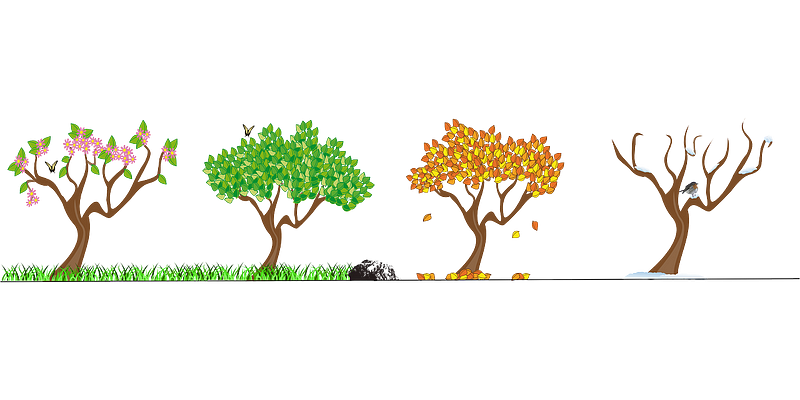The Season Switch-Up: Should we redefine seasonal boundaries to match climate change?
By Lillie Hoffart, Environmental Science, 2022

It is January 12, 2020, and it is a record-breaking 74 degrees Fahrenheit in Boston. This unusually warm weather brings everyone outdoors. Families gather on picnic blankets in the parks, joggers cut through the paths, and sunbathers lounge on benches — some even sporting shorts.
While the colder weather typical of a New England winter soon returned, these unexpectedly temperate days are not uncommon. A study funded by the Chilean government found that the thermally acceptable growing season has increased by 10.5 days in the last three decades. This means the year warms up more quickly and cools down more slowly.
Some scientists have begun to ponder what weather we should expect in future yearly cycles. As “shorts weather” lengthens, should we reconsider how we classify the seasons?
There are currently two different ways to differentiate winter, spring, summer, and fall. The meteorological method, created in the mid-1900s, is often favored by scientists. It breaks down the seasons into equal groupings of three months. These are based on the temperature cycle and our calendar structure. Summer is the three warmest months: June, July, and August, while winter is the three coldest: December, January, and February. Spring and fall are the “transition seasons” in between.
The meteorological method, created in the mid-1900s, is often favored by scientists. It breaks down the seasons into equal groupings of three months.
The astronomical method, on the other hand, is a method that has been around nearly as long as humans have gazed at the stars and planted crops. It is based on the tilt of the earth as it rotates around the sun. This means the seasons are divided by the length of the days. Equinoxes mark the time when the sun passes directly over the equator, where the day-to-night ratio is exactly 12 hours. Because the earth does not travel around the sun in exactly 365 days, the equinoxes and solstices can vary. In the Northern Hemisphere, they usually fall around June 21 (the summer solstice), December 22 (the winter solstice), March 21 (the spring equinox), and September 22 (the autumnal equinox). This is the event you would see marked on your phone calendar as the “First Day of Spring.”
A study in 1983 found that the meteorological seasons fit much better with weather patterns in most locations. The astronomical method, on the other hand, really only fits over the Oceanic region of the Southern hemisphere. The lead of the study, Kevin Trenberth, noted in a 2017 interview that after his findings were published, some groups in the United States attempted to switch from the astronomical method to the meteorological method — which would better match the seasonal changes in their region — but were unsuccessful. Today, according to Trenberth, the astronomical definition of seasons persists as the most popular in the U.S.
Scientists estimate that as the globe warms up, the tropics are expanding by 0.1 to 0.2 degrees of latitude every decade. While seemingly small, this means many places with four seasons — regions 30 to 60 degrees North and South of the equator — are instead shifting to two seasons. This results in a dry season and wet season, both of which are hot.
Scientists estimate that as the globe warms up, the tropics are expanding by 0.1 to 0.2 degrees of latitude every decade.
This temperature change brings with it an expansion of extreme weather phenomena. According to the National Oceanic and Atmospheric Administration, the number of extreme weather events is expected to increase in upcoming years. Many locations will have more heat waves, less frequent and more intense precipitation, and an increase in droughts. The weather patterns we expect are predicted to alter drastically.
This leads to the question: is it time to create another method of dividing the year to better match seasonal patterns? As the temperature stays warmer for longer, should summer be extended to better represent when it is comfortable to wear shorts? We would stop sitting on the edge of our seats for the first snow of winter because winter would still be weeks away. The current definition of seasons is far from an exact science. With the uncertainty of how climate change will impact weather events, the possibility of altering the seasons cannot be ruled out.
Journal of Climate (2014). DOI: 10.1175/JCLI-D-13–00287.1
Bulletin of the American Meteorological Society (1983). DOI: 10.1175/1520–0477(1983)064<1276:WATS>2.0CO;2
Global Change Biology (2013). DOI: 10.1111/gcb.12283
